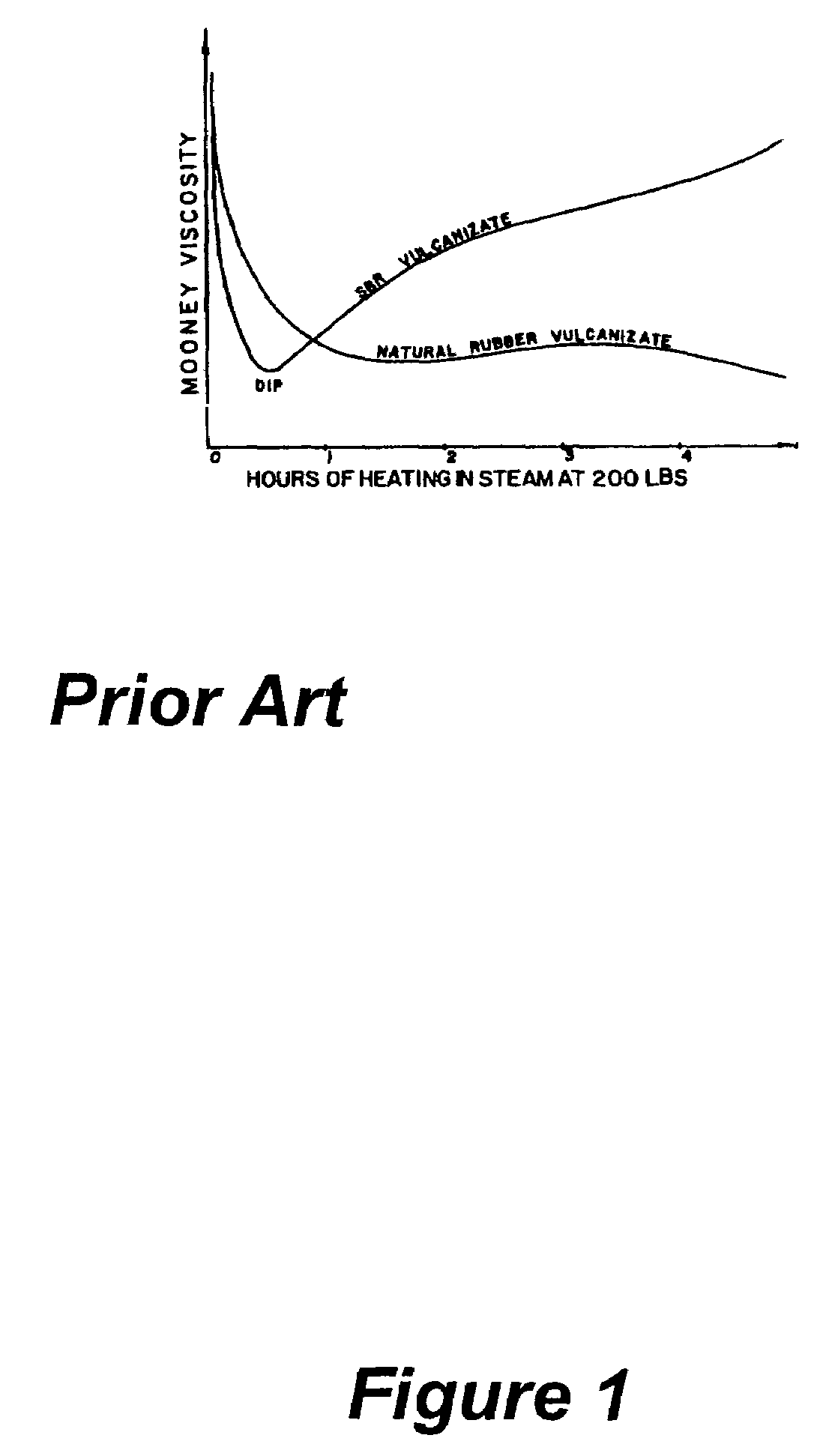Rubber reduction
a technology of reducing and reducing rubber, applied in the field of reducing rubber, can solve the problems of stock piling, synthetic rubber cannot be reclaimed using these latter conditions, and sbr experiences a short-lived softening followed by an extended hardening
- Summary
- Abstract
- Description
- Claims
- Application Information
AI Technical Summary
Benefits of technology
Problems solved by technology
Method used
Image
Examples
examples 1 – 14
EXAMPLES 1–14
[0043]In all of the examples the rubber feedstock was from used automobile tires. The tires were processed to remove any steel and fiber belts contained therein. The rubber was shredded to produce chips or shavings having an irregular shape. The chips and shavings were generally between about 1 and about 4 mm thick and had a surface area of between about 0.5 to about 5 cm2. The majority of chips and shavings were between about 1 and about 2 mm thick and had a surface area of between about 1 to about 2 cm2.
[0044]A reactor capable of operating at temperatures of up to 500° C. and pressures of up to 5000 psi was used in all experiments. The reactor was charged with between about 20 and about 30 g of rubber and about 100 ml of water. In most experiments the rubber sample was immersed in water in the reactor. In some experiments the rubber sample was held in a perforated basket above the water. Heating was initiated with a valve on the reactor remaining open. This valve was ...
PUM
| Property | Measurement | Unit |
|---|---|---|
| Temperature | aaaaa | aaaaa |
| Temperature | aaaaa | aaaaa |
| Temperature | aaaaa | aaaaa |
Abstract
Description
Claims
Application Information
 Login to View More
Login to View More - R&D
- Intellectual Property
- Life Sciences
- Materials
- Tech Scout
- Unparalleled Data Quality
- Higher Quality Content
- 60% Fewer Hallucinations
Browse by: Latest US Patents, China's latest patents, Technical Efficacy Thesaurus, Application Domain, Technology Topic, Popular Technical Reports.
© 2025 PatSnap. All rights reserved.Legal|Privacy policy|Modern Slavery Act Transparency Statement|Sitemap|About US| Contact US: help@patsnap.com



